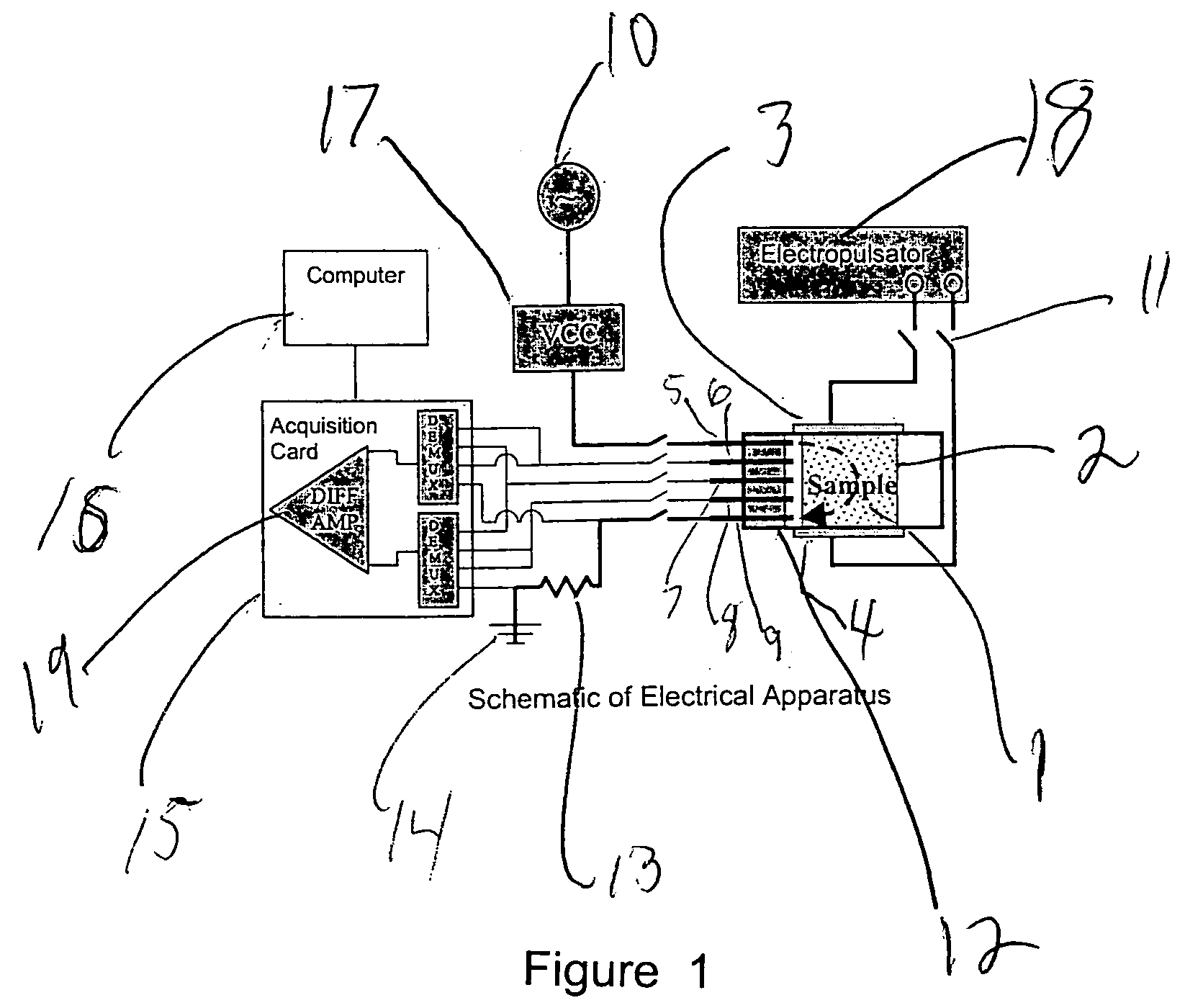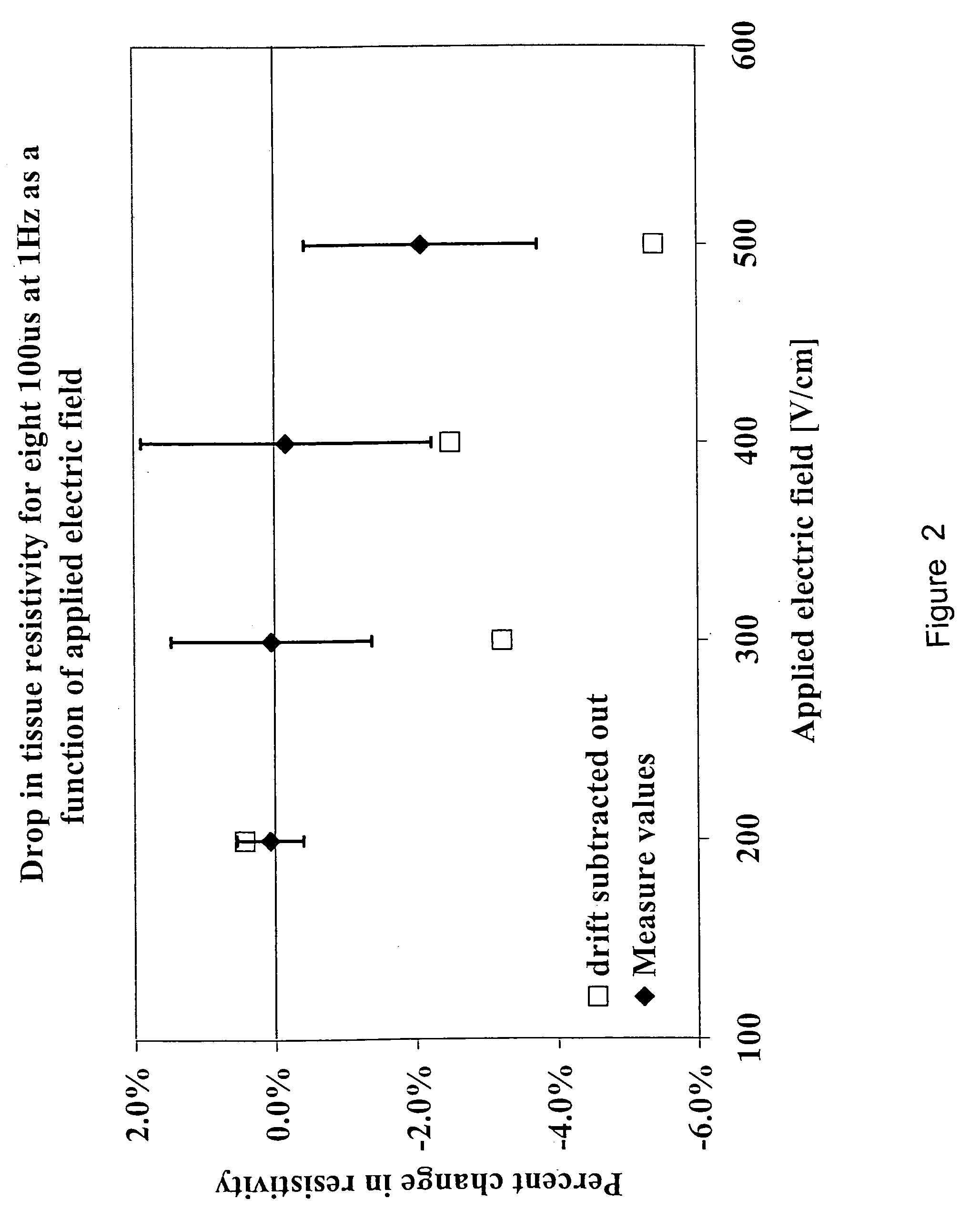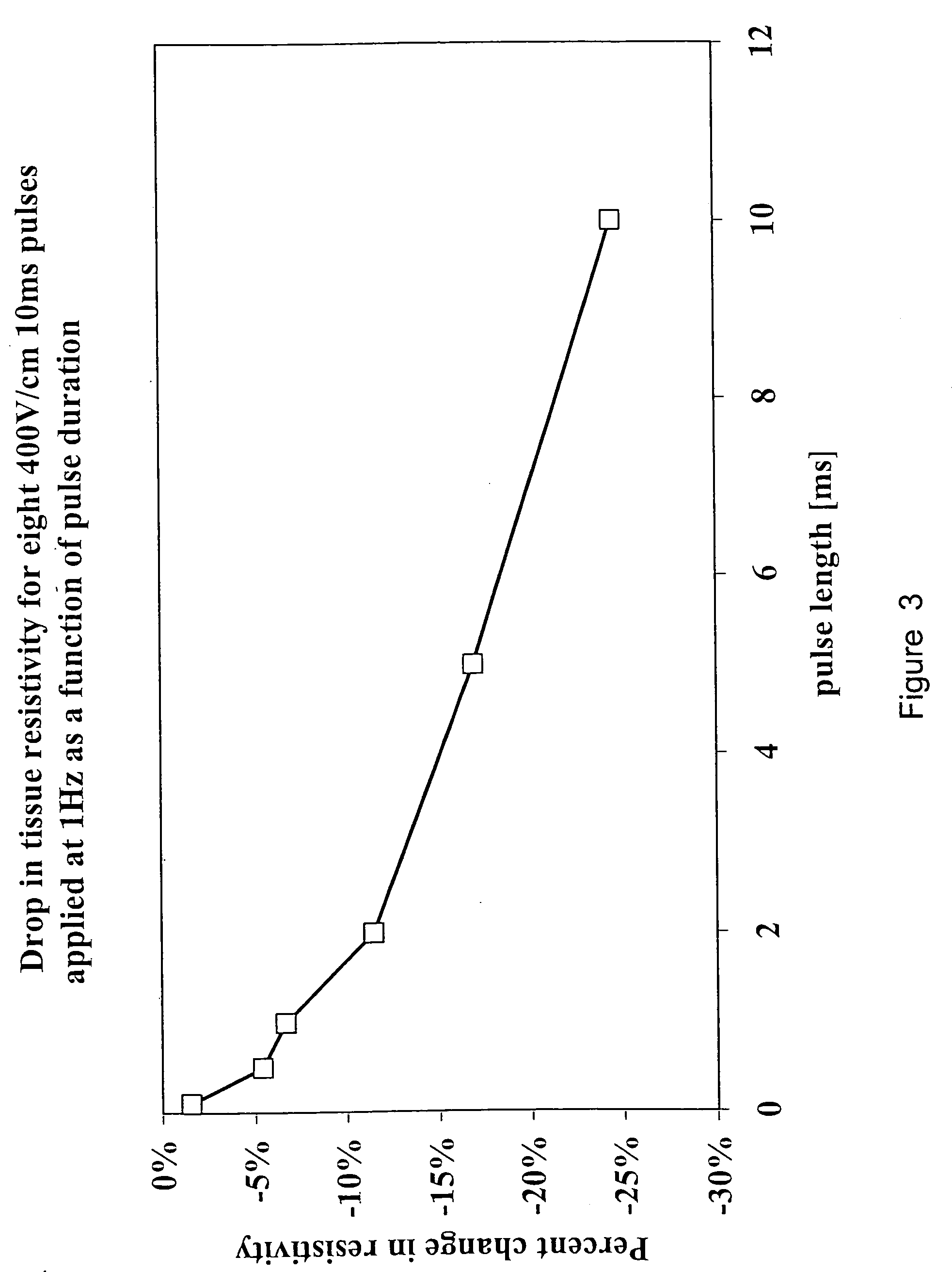Controlled electroporation and mass transfer across cell membranes in tissue
a cell membrane and cell technology, applied in the field of tissue electroporation, can solve the problems of inability to control the process of electroporation in both individual cells and tissues in real time, low efficiency of transfection by electroporation, and inability to adapt the specific characteristics of individual cells to the current procedure, etc., to achieve the effect of minimizing cellular damage and high efficiency of electrical energy us
- Summary
- Abstract
- Description
- Claims
- Application Information
AI Technical Summary
Benefits of technology
Problems solved by technology
Method used
Image
Examples
example
Numerical Method
[0086] A simplified two-dimensional isotropic cross-section of a liver 7 cm in diameter is used for the simulation. The surface of the analyzed tissue is assumed to be electrically isolated with a zero flux boundary condition to simulate a situation in which the liver is temporarily placed in an insulating, semi-rigid electrode array fixture during a surgical procedure. To collect data for the reconstruction algorithm, 32 electrodes are equally spaced around the periphery of the virtual phantom, i.e. electroporation conductivity map.
Experimental Results used in Front-Tracking Reconstruction Algorithm
[0087] For computational reasons and for model demonstration, we used the data from the 10 ms pulses in this study. Specifically, with these experiments, eight 10 ms pulses at a frequency of 1 Hz were delivered for electric fields of 0, 200, 300, 400 and 500V cm″1. The threshold gradient required to induce electroporation was taken from the experimental data and was sh...
example 2
Electroporation Model
[0088] The electroporation simulation evaluates the potential and gradient distribution in the tissue due to an electrical pulse using the finite element method. To account for the change in electrical properties of the tissue during electroporation, the algorithm iteratively solves the Poisson equation with a zero source term:
Δ·(σΔφ)=0
[0089] where σ is the electrical conductivity and φ is the electrical potential. The conductivity of the tissue is assumed to be initially at 0.13S m−1, which agrees with results for dog liver in situ at IkHz and measured from one sample. At locations where the voltage gradient surpasses a threshold gradient, the conductivity increases as prescribed by experimental results in FIG. 10. The gradients are recalculated with the updated conductivity values until the solution converges. For convergence, it was assumed that once the conductivity of an element increases, it will not revert to a lower value, at least within the duration ...
example 3
Ex Vivo Reconstruction Examples
[0090] In addition to the baseline example, three electroporation electrode geometrical configurations were investigated, which are modeled after in vivo electroporation experiments conducted on rabbit liver and murine skeletal muscle.
[0091] The first configuration which is show in FIG. 11 had two electrodes separated with an inner distance of 8 mm, centered in the liver, with one electrode at 800V and the other grounded. The second configuration was similar to the first, except that the applied voltage was 600V. The third configuration had two rows of four electrodes centered in the liver. The center-to-center distance between the two rows was 4 mm, and the center-to-center spacing between the electrodes in each row was 2 mm. The voltage of the top row was set to 1200V and the bottom row to ground. The diameters of the electrodes for the two examples were I.imm, 0.3 mm, and 0.5 mm, respectively.
PUM
| Property | Measurement | Unit |
|---|---|---|
| porosity | aaaaa | aaaaa |
| thickness | aaaaa | aaaaa |
| frequency | aaaaa | aaaaa |
Abstract
Description
Claims
Application Information
 Login to View More
Login to View More - R&D
- Intellectual Property
- Life Sciences
- Materials
- Tech Scout
- Unparalleled Data Quality
- Higher Quality Content
- 60% Fewer Hallucinations
Browse by: Latest US Patents, China's latest patents, Technical Efficacy Thesaurus, Application Domain, Technology Topic, Popular Technical Reports.
© 2025 PatSnap. All rights reserved.Legal|Privacy policy|Modern Slavery Act Transparency Statement|Sitemap|About US| Contact US: help@patsnap.com



